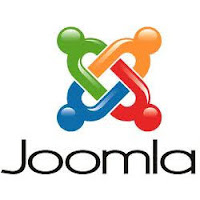 There are two ways to install Joomla. Manually and using an installation software such as Fantastico or C-panel, which are installed in the host’s server and offer an user friendly interface for the management of the site and the installation of software, but the requirements for both are very similar.
There are two ways to install Joomla. Manually and using an installation software such as Fantastico or C-panel, which are installed in the host’s server and offer an user friendly interface for the management of the site and the installation of software, but the requirements for both are very similar.Since Joomla is a database driven system, it requires a SQL database to run. That’s where it will install its tables and store information you add to it. Joomla also does better on a relatively fast server, so if you have been on the same server for longer than you can remember, contact your host and check if it’s been upgraded and if
that’s not the case, ask to be moved to a newer server.
Joomla uses a lot of resources and your site will load faster if the server can handle many processes at once. There is also a chance that the technology on older servers won’t support Joomla’s newest versions. You can view a list of the most current requirements at http://help.joomla.org/content/view/1938/302/ If you are using Fantastico or C-Panel, check the version of the installer. You want the newest version of Joomla if possible, and at the very least one version behind.
New versions usually carry security upgrades as well as bug fixes, and when dealing with a dynamic site, those fixes can make a big difference.
To determine Joomla’s latest version, visit the Joomla website.
Installing Joomla with C-Panel
So you have checked all the requirements, what now? Well, if you have C-Panel installed on your server, you have your work cut out for you.Go to C-Panel, look for Fantastico and look under the Content Management section.
Check the Joomla version they have available.
You want the 1.5 version at least. If it is a recent version,
click “New Installation” (some versions of Fantastico also give you an option to upgrade your installation if you already have one).
You will be asked to fill in the following fields:
- What domain you want to use.
- Install directory (leave it empty if you want it to be in the root folder of your
site or create the name of a directory if you want it to be inside a folder within
your site). - Admin username and password, email and full name.
- Site name
- Install user data (check box). This option will install pages, menus and
directories with Joomla information.
If you’d like to see them and changethem around as a way of learning how to use the site, leave this option. Personally, I find this option cumbersome, since you have to go ahead and
delete all the Joomla pages from your site, so I always uncheck this. Then click
“Install Joomla”.
Manual Installation
Now what do you do if your server does not provide you with C-Panel? Don’t worry,there are a few more steps, but it’s still not a long process.
You will need a database, an FTP program and Joomla Installation files.
Step 1 – The Database
Most hosts nowadays, allow you to create databases using their administration. Youwon’t have to know how to deal with the database once it’s created. All you need
is the:
- Database Name
- Database ID
- Database Password
- Database Path (or address)
Keep it safe, since Joomla will ask you for it during the installation.
Step 2 – Downloading Joomla Files
Once you have the database set up, you need the Joomla Installation files. You canget the most updated files from: http://www.joomla.org/download.html
Download them to your computer as a zip file and extract them to your website
folder. Now, you have two options here. If you want Joomla to be your whole site, or
the main part of your site, you should put it on the root folder, which is the main
folder for your site.
If instead, you already have a site and you only want Joomla to be part of that site,
in a subfolder such as: http://mysite.com/joomla, then you should create that folder
and extract all of the files to that folder instead.
Step 3 – Uploading Joomla Files
Next, you should upload all of the Joomla files to your host using an FTP program, orextract the zip file directly to your server through the server’s file manager.
Step 4 – Running the Installation
Once that is done, go to (if you uploaded Joomla to the root folder):http://yoursite.com/index.php
Or if you uploaded it to a sub-folder, go to:
http://yoursite.com/JoomlaFolder/index.php
From that point on, follow the install wizard.
It will ask you for a language, and then it will check whether your server can handle
Joomla without any problems.
On some specific hosts, Joomla's folders might not default to their correct permission settings, which would cause it to display an error saying 'Access is not allowed'. In that case, you might have to access those folders and change the permissions by hand.
Some hosts provide an interface on their administration that allows you to do that,
otherwise, check the permission instructions on the FTP program you are using. When
changing permissions, you must be very careful, because if you change the wrong
folders, your site may be wide open to hackers.
There are many discussions about which security setting should be used with Joomla.
The basic permission settings are:
Use the most secure setting for all non-public files whenever possible and when it
doesn't affect installations and usage of Joomla.








0 comments:
Post a Comment